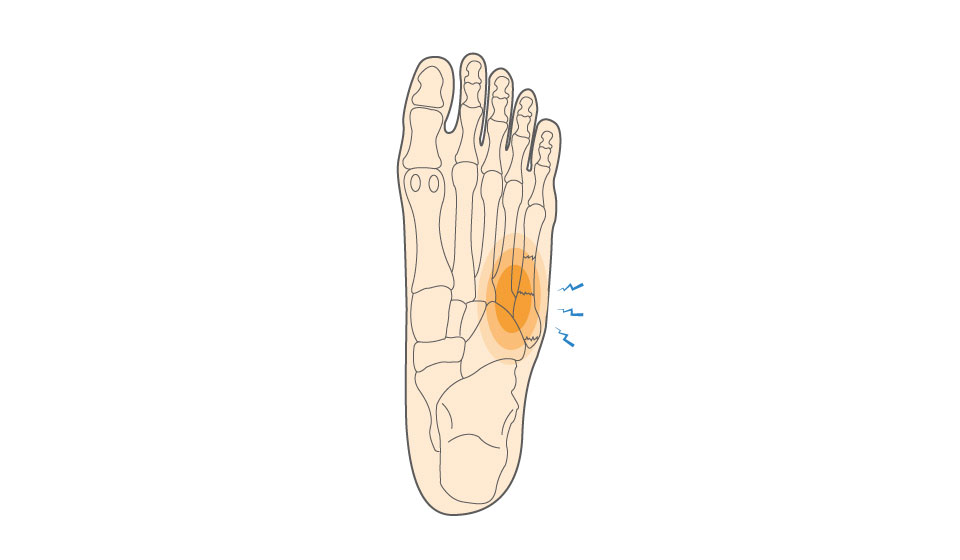The metatarsal bones are in the middle foot between the tarsal (ankle) bones and the base of the toes (distal phalange bones). A foot fracture in the fifth metatarsal (located on the outside of the foot) can occur anywhere along the bone but most often happens on the tip or the base, closer to the ankle. This type of lateral foot injury is one of the more common fifth metatarsal fractures.
There are different types of metatarsal fractures, each one defined by the location:
- Zone 1: Small fractures of the tip of the fifth metatarsal base. The fractured fragment of bone pulls away from the main bone. These types of fractures are also called avulsion fractures.
- Zone 2: Larger fractures of the fifth metatarsal base closer to the shaft (the long section of the cone), also called Jones fractures. Because this area of the bone has poor blood supply, nonunion (poor bone healing) occurs much more frequently in Jones Fractures.
- Zone 3: Fractures that occur anywhere along the shaft of the metatarsal bone.


